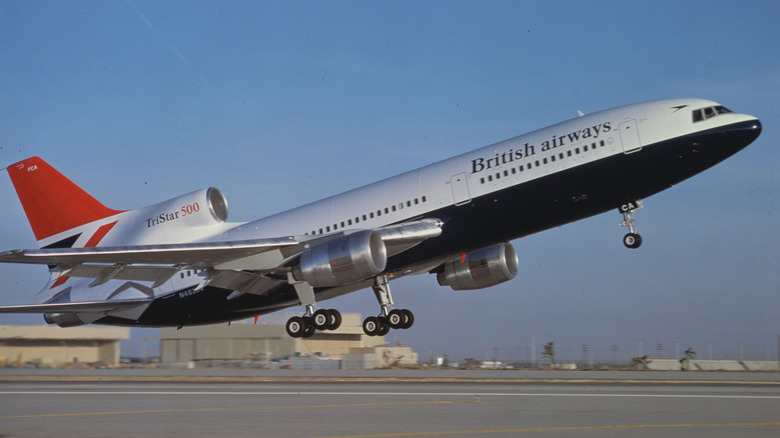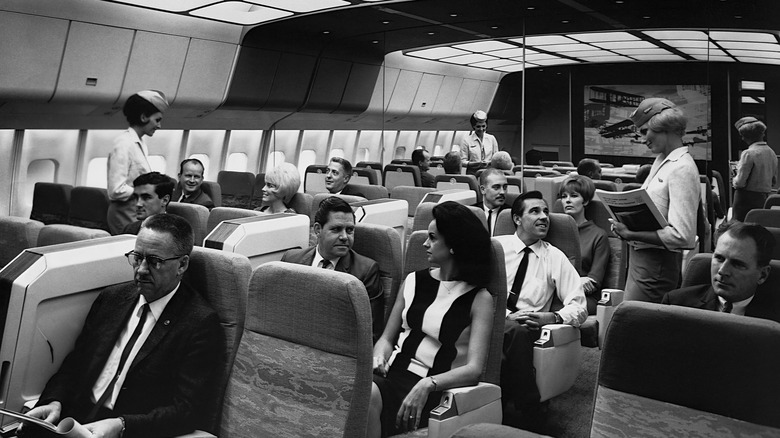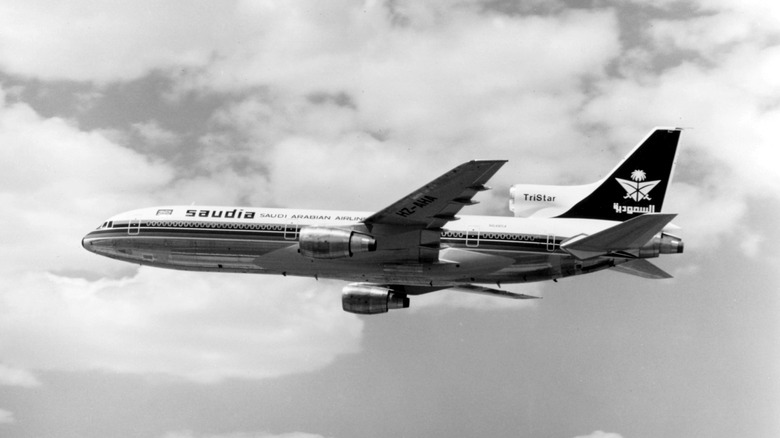This Incredible Airliner Failed Despite Being Ahead Of Its Time - Here's Why
Autopilot systems are now standard components of just about every passenger jet you'll fly in today. They offload some of the more arduous work of long-haul flights and allow the pilot and copilot to stay alert longer. Your average Boeing 737, for example, is full of computer servers and tech to keep the plane safely aloft and ensure that air travel is one of the safest ways to fly.
Prior to the 1970s, autopilot systems existed, but planes were still manually controlled by a relatively large crew through most of the flight. Lockheed Martin's plane (then called the Lockheed California), the L-1011 TriStar, changed that on May 25, 1972 with the first cross-country flight using an automatic flight control system (AFCS), more commonly known as autopilot. According to Lockheed Martin, the L-1011 was the first passenger plane capable of "flying itself."
Compared to other planes at the time, the TriStar was a technological marvel. Seeing an L-1011 in the early 1970s would be like seeing an electric car in 2005, advanced to an almost otherworldly level — a taste of the future.
Airborne luxury
In addition to breaking records, the TriStar was intentionally styled to fly through the air as gracefully as possible. The jet had two engines mounted under its wings, and a third engine blended into the vertical stabilizer. Lockheed says it was "as sleek as a dolphin" — if a dolphin had a wingspan of over 155 feet and was powered by three Rolls-Royce jet engines. Around 50 years later, the look still holds up.
The TriStar not only looked good, but it was incredibly comfortable, and the experience was reportedly akin to staying at a hotel or taking a vacation on a cruise ship. The interior of the plane had a full galley (something practically alien to passenger airliners) and elevators that went from deck to deck. It was the pinnacle of airborne transportation in the 1970s. It was also remarkably quiet on the inside, earning the nickname "Whisperliner."
Hanging on by a thread
In all, Lockheed Martin made 250 TriStars between 1972 and 1983. That may seem like a lot, considering how complex passenger jets are, but Boeing was able to deliver 711 Boeing 737 jets in all variations within the same time period, making the TriStar a failure by comparison. Financial issues with engine designer Rolls Royce as well as Lockheed Martin's own money problems ultimately brought the Tristar's short chapter to a close.
The TriStar failed for the simple reason that Lockheed Martin ran out of money and was forced to shutter production. The plane's initial development cycle drained the company of many resources, and the fact Lockheed Martin was already hanging on through government assistance didn't help matters much. The L-1011 TriStar was the last passenger airliner Lockheed Martin would ever make. Instead the company decided to divert its efforts to the defense industry, where it currently produces jets like the F-16 and F-35 for the U.S. military. So you don't need to feel sorry for Lockheed Martin.


